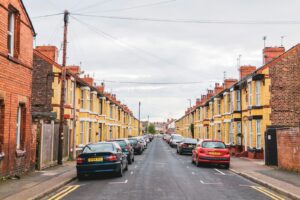Urban development is not regeneration
 Andrew Maliphant has worked in regeneration for almost 30 years. His new book is full of practical advice for local development that starts with people and places.
Andrew Maliphant has worked in regeneration for almost 30 years. His new book is full of practical advice for local development that starts with people and places.
There have been a number of academic textbooks about urban regeneration, many focusing on government policy, and some collections of articles around best practice, but no practical handbook that says ‘this is what you do’.
My plan has been to provide such a guide written in readable English, with cartoons specially drawn by Kipper Williams and illustrative case studies to add value to the text, and I hope I have in some measure succeeded.
There is still a debate between people who come to regeneration with very differing perspectives and agendas, which I guess is healthy. My own definition of regeneration, rural as well as urban, is that it is change for the better – change that helps an area and its inhabitants to be better able to sustain themselves in future – and in broad terms this definition assumes that past solutions are no longer working and that another approach is needed.
‘Local energy harnessed to local determination and expertise is much
more likely to produce a sustainable result than other approaches’.
I have addressed the Local Regeneration Handbook to a character I have called a ‘local regeneration worker’. This could be anyone, from a concerned and active member of the community to a public sector official to a special regeneration project officer. What I would say they should all have in common is a concern for the wellbeing of the community where they live or work, and an ability to work with others for the best possible future for that community.
I have taken this approach after some 25 years’ personal experience in order to distinguish genuine people- and place-based regeneration from urban development. Development for private or corporate objectives may have some regenerative effect – it may even look like change for the better, and certainly will be described as such – but by its nature it won’t be designed primarily for community benefit, and as a result it won’t always have a lasting good effect on the community or the place that it says it serves.
This also applies I would say to top-down government plans for increased house building, which seem to me to be more about building market-price homes on the green countryside and less about affordable housing, or indeed the extra community facilities required by new housing such as expanded local schools.
It is much better to focus on sustainable local benefit from the outset. There is plenty enough for a regeneration worker to do, from identifying local needs, to engaging local people and organisations in finding the solutions, and I have tried to cover the wide spectrum of regeneration activity while providing signposts to further, more detailed information. Creating effective local partnerships and bringing in financing are only two of the key steps towards a successful result.
Large regeneration grants from central government have become a thing of the past of course, but the growth of community and social enterprises has also led to the growth of a range of social finance options. These can usefully support regeneration projects of different kinds, though one of the most difficult costs to cover is that of a paid regeneration officer, as pure revenue funding is in short supply.
One possible approach to this, and one that also ties in with the need for a local focus, is to lead a regeneration programme from within a town or parish council, who can levy their own parish precept and also apply for a public works loan. For areas in England without a parish council, there is a process for creating a parish council where none currently exist, and this is also covered in the book.
In summary, I would say that local energy harnessed to local determination and expertise is much more likely to produce a sustainable result than other approaches.
The book has a deal of practical advice and examples, but if you want an over-arching policy, the main thrust is that long-lasting regeneration needs to be based on what has been called the three-legged stool of sustainable development:
- Physical sustainability – are we making the best use of local land and resources, will what we do make it impossible for any future uses?
- Social sustainability – will what we are doing bring the local community together, and will it encourage people to continue to work together in the future?
- Economic sustainability – perhaps the most difficult of all to gauge, will what we do bring jobs and prosperity both now and in the future?
The heart of the book lies in helping regeneration workers and the members of their local partnerships to make informed decisions about what is best for the future of their community, following these principles. A large claim, but we can but try.
- The Local Regeneration Handbook will be published by Sage Publications in October 2017















